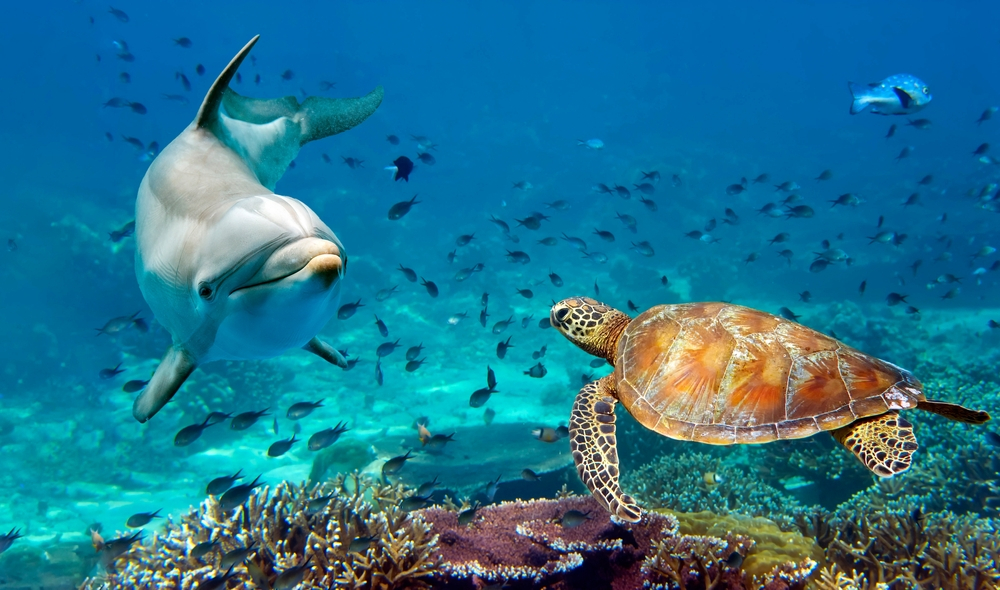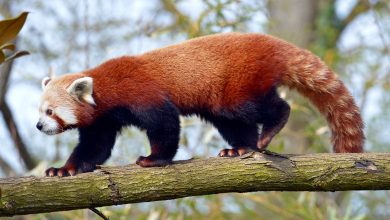Curious Creatures: Fascinating and Fun Facts About Animals

Welcome to Curious Creatures: Fascinating and Fun Facts About Animals. Our world is teeming with an incredible array of animal life, each species bringing its own unique traits and abilities to the tapestry of biodiversity. From the oceans’ depths to the soaring skies, the animal kingdom is filled with wonders that never cease to amaze. Whether it’s the intelligence of dolphins, the speed of cheetahs, or the bioluminescence of fireflies, the diversity and complexity of animals are nothing short of spectacular.
The purpose of this blog is to share interesting and lesser-known facts about these amazing creatures. Through our detailed sections covering mammals, birds, reptiles, amphibians, insects, arachnids, and aquatic life, we aim to educate and entertain, providing you with insights into the mysterious and often unbelievable aspects of animal behavior and biology. Join us on this journey of discovery and revel in the marvels of the animal world.
Section 1: Mammals
1.1 The Incredible Intelligence of Dolphins
Dolphins are renowned for their remarkable intelligence, which rivals that of some of the most advanced animal species. One of the most fascinating aspects of their cognitive abilities is their sophisticated communication skills.
Dolphins use an intricate system of vocalizations, body language, and echolocation to convey information and interact with each other. These sounds range from clicks and whistles to complex sequences that may function similarly to human language. Moreover, dolphins demonstrate exceptional problem-solving abilities, often working together to overcome challenges in their environment.
For instance, they have been observed using tools, such as marine sponges to protect their snouts while foraging on the seafloor, and collaborating in hunting strategies to corral fish schools. These advanced mental capabilities not only highlight the intelligence of dolphins but also underscore the intricate social structures within their pods.
1.2 The Speed of the Cheetah
The cheetah is the undisputed champion of speed in the animal kingdom, capable of reaching record-breaking sprinting speeds of up to 60-70 miles per hour. This phenomenal velocity is achieved thanks to a combination of unique adaptations specifically evolved for rapid acceleration and short bursts of speed.
The cheetah’s lightweight frame and elongated spine allow for an extended stride length, while its powerful leg muscles provide the explosive power needed for quick takeoffs. Additionally, the enlarged nasal passages and lungs, along with a large heart, enable efficient oxygen intake and transport, supporting intense physical exertion.
Unique adaptations such as semi-retractable claws provide additional grip and traction during high-speed chases, and a long, muscular tail acts as a counterbalance, helping maintain stability and agility as the cheetah rapidly changes direction. These remarkable traits make the cheetah an extraordinary predator, capable of outpacing any land animal in a thrilling pursuit of its prey.
1.3 Unique Traits of the Platypus
The platypus is a fascinating and unique mammal native to Australia, distinguished by several remarkable traits that set it apart from other mammals. One of the most striking features of the platypus is that it is an egg-laying mammal, one of only five species in the monotreme group. Unlike most mammals that give live birth, female platypuses lay eggs and incubate them until they hatch.
In addition to their unusual reproductive method, male platypuses possess venomous spurs on their hind legs, capable of delivering a painful and potent venom to potential predators or rivals during mating season. Another extraordinary trait of the platypus is its ability to detect electrical signals through electroreception.
This sensory adaptation allows the platypus to locate prey underwater by detecting the electric fields generated by the muscle contractions of its prey, a critical skill for hunting in the murky rivers and streams they inhabit. These unique characteristics make the platypus one of the most intriguing and enigmatic creatures in the animal kingdom.
Section 2: Birds
2.1 Amazing Migration of Arctic Terns
Arctic terns are renowned for undertaking the longest migratory journeys of any bird species, traveling annually from their breeding grounds in the Arctic to the Antarctic and back again. Covering an astounding distance that can surpass 40,000 miles round trip, these remarkable birds embark on a formidable journey that traverses the entire globe.
Arctic terns employ a variety of sophisticated navigation techniques to accomplish this feat. They rely on the sun’s position, the Earth’s magnetic field, and even the stars to guide their way across vast oceans and diverse terrestrial landscapes.
Recent studies suggest that Arctic terns may also use olfactory cues to aid in their navigation, harnessing an intricate sensory map to pinpoint their migratory routes. This extraordinary ability to navigate over such immense distances with precision makes the Arctic tern’s migration one of the most spectacular and awe-inspiring events in the animal kingdom.
2.2 The Mimicry Skills of the Lyrebird
The lyrebird, a remarkable songbird native to Australia, is celebrated for its exceptional mimicry skills, capable of imitating a vast array of sounds from both natural and human-made environments.
In the wild, lyrebirds are known to replicate the calls of other bird species, the sounds of forest animals, and even environmental noises like waterfalls and chainsaws. This extraordinary ability serves as a crucial tool for communication and territorial defense, allowing male lyrebirds to attract mates and ward off rivals by showcasing their versatile vocal repertoire.
The implications of the lyrebird’s mimicry extend beyond their ecological interactions; they also offer intriguing insights into avian cognition and the impacts of human activity on wildlife. Lyrebirds often incorporate sounds of human origin, such as camera shutters, car alarms, and construction tools, reflecting the acoustic footprint of human presence in their habitats.
Their mimicry not only highlights their adaptability and learning capabilities but also serves as a poignant reminder of the ever-encroaching influence of human civilization on the natural world.
2.3 Color-Changing Flamingos
Flamingos are renowned for their vibrant pink and red hues, a characteristic directly influenced by their diet. These magnificent birds derive their striking coloration from carotenoid pigments found in the algae, diatoms, and small crustaceans that constitute a large portion of their diet. When flamingos ingest these pigments, enzymes in their digestive system break them down and deposit the pigments in their feathers, skin, and beak, resulting in their signature colors.
The intensity of a flamingo’s coloration serves as an indicator of its health and diet quality, with more vividly colored individuals often being healthier and better nourished. Flamingos inhabit a variety of wetland environments, including saline or alkaline lakes, estuaries, and mangrove swamps, where they engage in their unique filter-feeding behavior. Using their specially adapted beaks, flamingos are able to separate mud and silt from their food by inverting their heads and employing a comb-like structure known as lamellae.
This intricate feeding strategy not only sustains their dietary needs but also plays a vital role in maintaining the balance of their delicate ecosystems. Thus, the mesmerizing color change of flamingos is a fascinating intersection of diet, habitat, and feeding behavior that highlights the intricate connections within the natural world.
Section 3: Reptiles and Amphibians
3.1 The Survival Skills of Geckos
Geckos are extraordinary reptiles equipped with several survival skills that have fascinated scientists and nature enthusiasts alike. One of the most remarkable abilities of geckos is their capacity to regrow their tails. When threatened by a predator, a gecko can detach its tail as a diversion, giving it a chance to escape while the predator is distracted.
Over time, the gecko’s tail will regenerate, although the new tail may differ slightly in appearance and structure from the original.
In addition to this remarkable regenerative capability, geckos possess unique adhesive toes that enable them to climb smooth and vertical surfaces with ease. This ability is made possible by millions of tiny hair-like structures called setae on the pads of their toes, which create intermolecular forces with the surfaces they touch, allowing the geckos to adhere to almost any material.
These adaptations not only aid in evading predators but also enable geckos to access diverse habitats and resources crucial for their survival. Together, these traits showcase the incredible adaptability and resilience of geckos in a variety of environments.
3.2 Poison Dart Frogs
Poison dart frogs, native to Central and South America, are renowned for their dazzling array of vibrant colors and potent toxicity. These striking amphibians exhibit a range of hues, from brilliant blues and reds to flashy yellows and greens, which serve as a warning signal to potential predators about their toxicity.
The vivid coloration of poison dart frogs is an example of aposematism, a survival strategy where bright colors deter predators by signaling danger. The toxicity of these frogs is derived from alkaloid compounds found in their skin, which they accumulate through their diet of ants, mites, and other small invertebrates.
The potent toxins not only provide a defence mechanism against predation but have also been studied for potential medicinal applications. Indigenous tribes have historically utilized the frogs’ toxic secretions to poison the tips of their blow darts for hunting, leading to the common name “poison dart frog.”
Despite their small size, poison dart frogs play a significant role in their ecosystems and continue to captivate scientists and enthusiasts with their remarkable adaptations and ecological importance.
3.3 Alligator Communication
Alligators, intriguing reptiles native to the wetlands of the southeastern United States, exhibit a complex communication system encompassing both vocalizations and body language. Vocalizations in alligators vary significantly and are used to convey different messages within their social structure.
For instance, juvenile alligators emit high-pitched yelps to alert their mothers of danger, while adult males generate deep bellows during mating season to advertise their presence to potential mates and rivals. These bellows create infrasound waves that can travel through water, making them an effective means of long-distance communication.
In addition to vocal sounds, body language plays a crucial role in alligator interactions. Displays such as head slaps, jaw claps, and raised body postures are employed to establish dominance, deter rivals, and manage social hierarchies. These behaviors are particularly evident during breeding seasons when male alligators compete for territory and mates.
The social structures within alligator populations are typically organized around dominant individuals who exert control over prime nesting and feeding sites. Understanding the multifaceted communication methods of alligators not only provides insights into their social lives but also underscores the complexity and adaptability of these ancient creatures within their environments.
Section 4: Insects and Arachnids
4.1 The Engineering Skills of Ants
Ants are tiny yet remarkable engineers, demonstrating an extraordinary ability to construct complex colony structures and exhibit highly cooperative behaviors. Their intricate underground nests, often consisting of numerous chambers and interconnecting tunnels, serve a variety of functions such as nurseries, storage rooms, and living quarters.
These structures are carefully designed to regulate temperature and humidity, providing an optimal living environment for the colony.
One of the most impressive aspects of ant engineering is their ability to coordinate large-scale projects through advanced collective behavior. Ants communicate and cooperate through pheromone trails, touch, and other signals, enabling them to perform tasks such as foraging, defense, and nest building with remarkable efficiency.
This cooperative behavior extends to the division of labor within the colony, where different individuals take on specialized roles, ensuring the smooth operation and survival of the colony. The engineering skills of ants highlight not only their biological ingenuity but also offer inspiration for human engineering and organizational practices.
4.2 Bioluminescence in Fireflies
Fireflies, also known as lightning bugs, capture the imagination with their enchanting bioluminescent displays on warm summer nights. The chemical process behind their glow is a fascinating example of nature’s ingenuity.
Fireflies produce light through a reaction that occurs in specialized light-emitting organs located in their abdomens. This process involves the enzyme luciferase acting upon a molecule called luciferin, in the presence of oxygen, adenosine triphosphate (ATP), and other cofactors.
The result is a visible, cold light that efficiently converts chemical energy into light without generating heat. The purposes of bioluminescence in fireflies are multifaceted, serving both ecological and communicative roles.
Primarily, the glow functions as a signaling mechanism during mating rituals, with each species emitting distinct light patterns to attract potential mates. Additionally, the bioluminescent light can serve as a deterrent to predators, signalling the presence of distasteful or toxic compounds within the fireflies’ bodies. By understanding the chemistry and purposes behind their glow, we gain greater appreciation for these luminous insects and their role in the ecosystem.
4.3 The Strength of Dung Beetles
Dung beetles may be small, but they possess an impressive strength that astounds scientists and nature enthusiasts alike. These remarkable insects hold records for their ability to lift and transport objects many times heavier than their own body weight.
In fact, dung beetles can move loads up to 1,141 times their body weight—equivalent to a human lifting a double-decker bus. This extraordinary strength is not just a feat of physical prowess but also plays a crucial ecological role.
By rolling and burying dung, dung beetles help recycle nutrients back into the soil, promote soil aeration, and reduce pest populations, which in turn enhances plant growth. Their diligent work creates a healthier ecosystem, showcasing how even the smallest creatures can have a monumental impact on their environment.
Section 5: Aquatic Life
5.1 The Deep-Sea Anglerfish
Among the fascinating denizens of the deep sea, the anglerfish stands out with its unique adaptations and mysterious allure. Residing in the dark, cold depths of the ocean, often well below 200 meters, the anglerfish has evolved an extraordinary luring mechanism to compensate for the scarcity of light and prey in its habitat.
Atop its head, a modified dorsal fin spine, known as an illicium, extends forward and dangles a bioluminescent bulb, called an esca. This glowing lure, which contains symbiotic bioluminescent bacteria, attracts unsuspecting prey by mimicking the appearance of smaller, more vulnerable creatures. When potential prey ventures close, the anglerfish swiftly engulfs it with its cavernous mouth full of sharp teeth.
This symbiotic relationship between the anglerfish and the bioluminescent bacteria is essential for the anglerfish’s survival in the extreme environment of the deep sea, showcasing an intricate and efficient evolutionary partnership.
5.2 Octopus Intelligence and Camouflage
Octopuses are astonishingly intelligent creatures, celebrated for their remarkable problem-solving abilities and use of tools. These cephalopods have been observed manipulating their environment in ways that demonstrate both foresight and adaptability.
For instance, some octopuses have been seen collecting coconut shells and using them as portable shelters, a clear indication of tool use. Beyond their intelligence, octopuses possess an unparalleled ability to change texture and color, enabling them to blend seamlessly into their surroundings or communicate with other octopuses.
This incredible adaptability is facilitated by specialized skin cells called chromatophores, which expand and contract to alter the octopus’s appearance almost instantaneously. Their capacity for camouflage serves multiple purposes, from avoiding predators to ambushing prey, making the octopus one of the ocean’s most enigmatic and versatile inhabitants.
5.3 The Migration of Salmon
The migration of salmon is a phenomenal journey that underscores the resilience and intricacy of their life cycle. Born in freshwater streams, young salmon, known as fry, gradually make their way to the ocean, where they spend several years maturing.
As they reach adulthood, they embark on an arduous upstream migration back to their natal rivers to spawn. This roundtrip, sometimes spanning thousands of miles, is guided by their remarkable ability to navigate using Earth’s magnetic fields and olfactory cues.
However, this impressive migratory pattern is increasingly challenged by environmental impacts. Factors such as climate change, habitat destruction, and water pollution pose significant threats to their survival.
Dams, in particular, disrupt migratory routes, making it difficult for salmon to reach their spawning grounds. Conservation efforts and sustainable practices are crucial to mitigate these challenges and preserve the delicate balance of ecosystems that rely on the salmon’s migratory journey.
Conclusion
In this exploration of curious creatures, we’ve delved into the illuminating world of fireflies, marveled at the herculean strength of dung beetles, journeyed into the abyss with the enigmatic anglerfish, unlocked the brilliant mind of the octopus, and followed the arduous migration of salmon. Each of these fascinating animals showcases unique adaptations and behaviors that highlight the incredible diversity and ingenuity of nature.
As we reflect on these extraordinary stories, it’s clear that the animal kingdom is brimming with wonders waiting to be discovered. We encourage you to continue your journey of exploration and learning, as each new fact you uncover adds to our collective understanding and appreciation of these amazing creatures.
We invite you to share your favorite animal facts in the comments below. Whether it’s an astonishing piece of trivia or a personal encounter with wildlife, your contributions will help enrich our knowledge and foster a deeper connection with the natural world.
Thank you for joining us on this captivating journey through the world of “Curious Creatures: Fascinating and Fun Facts About Animals.” We hope you’ve enjoyed learning about the incredible adaptations and behaviors that make the animal kingdom so wondrous.




